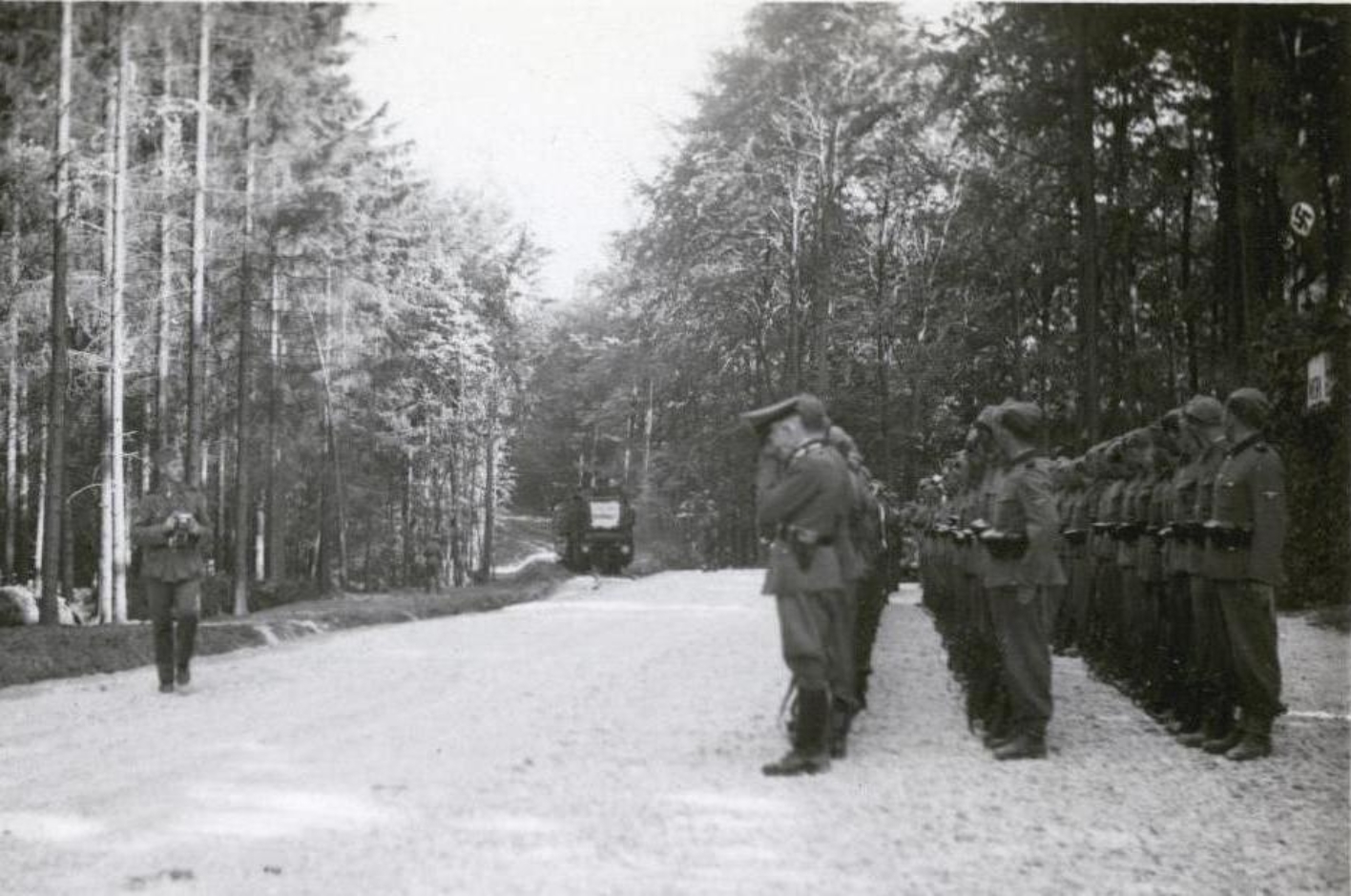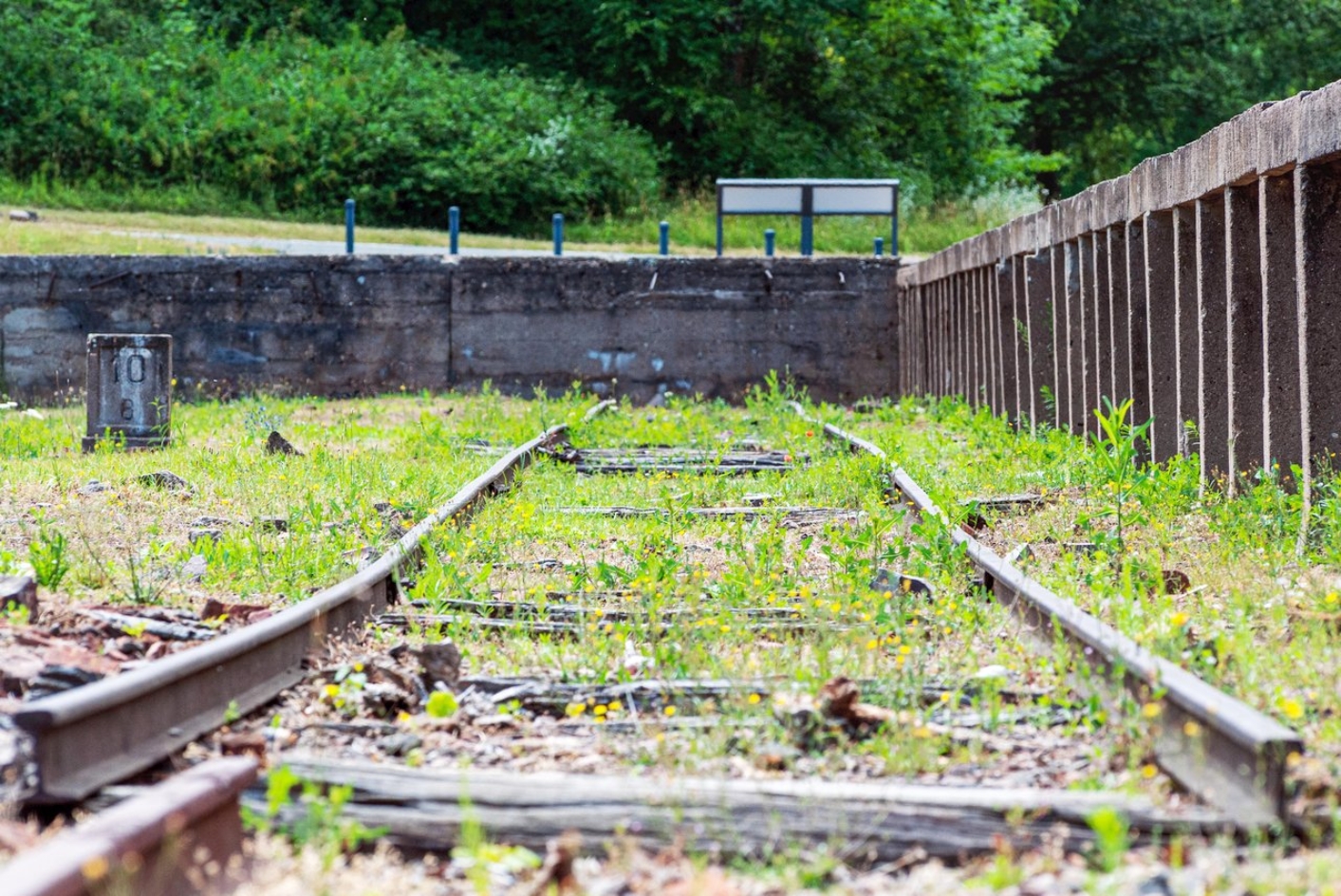


Initially the railway station served to supply the adjacent
The platform, which still stands today, was the site of horrifying scenes. In 1944 trains came from France with crammed-full wagons, in which the deported had suffocated or died of thirst. In 1945, overfilled transports arrived constantly from the concentration camps Auschwitz and Groß-Rosen with half-frozen people. Hundreds were pulled from the wagons merely as corpses.
In the late 1950s most of the rail lines were demolished and the large rail shed was torn down. Today, beginning in Weimar, the

